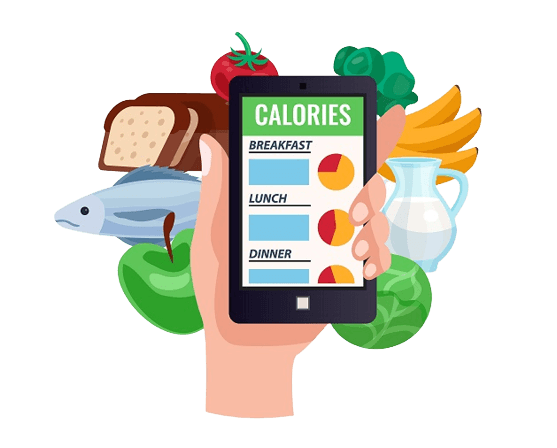Nutrition 101 – The Basics
Introduction to Nutrition
What is nutrition?
Nutrition, in its simplest terms, refers to the process of obtaining and utilizing the nutrients necessary for bodily functions and overall health. It encompasses everything we consume, from food and beverages to dietary supplements. Nutrition is not merely about filling our stomachs; it involves understanding the science behind the nutrients and their impact on our well-being.
Why is nutrition important?
Nutrition plays a vital role in maintaining good health and preventing diseases. The food we eat provides our bodies with essential nutrients that are responsible for carrying out various bodily functions. A balanced diet ensures that our body gets a wide range of vitamins, minerals, carbohydrates, proteins, fats, and water – all of which are necessary for optimal functioning. Good nutrition also impacts our energy levels, mental clarity, mood stability, and overall quality of life. It's like fueling your car with high-quality gasoline – you'll notice improved performance! When we provide our bodies with proper nutrition, we enhance its ability to repair itself, fight off illnesses more effectively, maintain a healthy weight, improve digestion, boost immunity—the list goes on!
The role of nutrients in the body
Each nutrient has its own unique purpose within the body. Understanding these roles can help us make informed choices when it comes to selecting what we eat. Carbohydrates serve as the primary source of energy for our bodies. They provide fuel for both physical activity and proper brain function. Proteins are crucial building blocks for cells and tissues; they repair damaged tissues and support muscle growth. Fats play a vital role in insulating organs and aiding in hormone production while providing a secondary source of energy. Vitamins are essential for various bodily functions; they act as coenzymes (substances needed for enzyme activity) or antioxidants that protect against free radicals' damage. Minerals, on the other hand, are necessary for maintaining healthy bones, teeth, and blood cells. They also play significant roles in nerve function and muscle contraction. Water is often overlooked but is undeniably vital for survival. It helps regulate body temperature, aids in digestion and nutrient absorption, lubricates joints, flushes out toxins, and keeps our skin healthy. Nutrition is the foundation of our well-being. By understanding what nutrition entails – from the nutrients we need to their functions within our bodies – we can make informed choices about what we consume. Good nutrition not only ensures optimal bodily functioning but also enhances our overall quality of life. So let's embark on this journey together to explore the world of nutrition and its profound impact on our health!
Macronutrients: Fuel for the Body
Carbohydrates
Carbohydrates, or carbs as some may prefer to call them, are the body's primary source of energy. They come in two main forms: simple and complex. Simple carbohydrates are made up of easily digested sugars, found in foods like fruits and sweets. These sugars can quickly provide a burst of energy but are also notorious for causing crashes shortly after consumption. Complex carbohydrates, on the other hand, consist of longer chains of sugar molecules and can be found in foods like whole grains, legumes, and vegetables. They take longer to break down and provide a more sustained release of energy.
Simple vs Complex Carbohydrates
The main difference between simple and complex carbohydrates lies in their chemical structure and how quickly they are absorbed by the body. Simple carbohydrates are easily broken down into glucose and absorbed rapidly into the bloodstream. This rapid absorption causes a spike in blood sugar levels, leading to a burst of energy that is short-lived. In contrast, complex carbohydrates take longer to break down due to their intricate structure. This slow breakdown results in a gradual release of glucose into the bloodstream over time, providing sustained energy levels.
Sources of Carbohydrates
Carbohydrates can be found in various foods, including grains (such as rice, oats, quinoa), starchy vegetables (like potatoes and corn), legumes (beans and lentils), fruits (such as bananas and apples), dairy products (milk and yogurt), and added sugars present in processed foods like sodas or candy bars.
Importance of Fiber
Fiber is a type of carbohydrate that cannot be fully broken down by our digestive system. While it doesn't contribute much to our energy levels directly, it plays a vital role in maintaining good digestive health. Fiber adds bulk to our diet and helps prevent constipation by aiding regular bowel movements. Additionally, it can help control blood sugar levels and lower cholesterol. Foods rich in fiber include whole grains, fruits with edible skins or seeds, vegetables, legumes, and nuts.
Proteins
Proteins are often referred to as the building blocks of life. They are composed of amino acids that play crucial roles in building and repairing body tissues, producing enzymes and hormones, supporting the immune system, and much more. Not all proteins are created equal; they can be categorized as complete or incomplete based on their amino acid composition.
Essential Amino Acids
Essential amino acids are those that our bodies cannot produce on their own, so we must obtain them from our diet. There are nine essential amino acids: histidine, isoleucine, leucine, lysine, methionine, phenylalanine, threonine, tryptophan, and valine. These amino acids are found in varying amounts in different protein sources.
Complete vs Incomplete Proteins
Complete proteins contain all nine essential amino acids in quantities sufficient for the body's needs. Animal-based sources like meat (beef, chicken), fish (salmon), eggs (yolk), dairy products (milk), and cheese are considered complete proteins. In contrast, plant-based proteins usually lack one or more essential amino acids but can be combined to form a complete protein profile by consuming various plant protein sources such as legumes (beans), grains (rice), nuts/seeds (almonds or quinoa).
Protein Sources and Their Benefits
Protein-rich foods extend beyond just animal products; there is a wealth of plant-based protein options too! Legumes like lentils or chickpeas, whole grains like quinoa or oats, nuts and seeds such as almonds or chia seeds, tofu and tempeh, and even certain vegetables like broccoli or spinach all provide protein. Incorporating a variety of protein sources in your diet ensures you receive a broad spectrum of essential amino acids while also reaping the benefits of other nutrients that these foods offer.
Fats
Dietary fats often get a bad rap, but they are an important part of a balanced diet. They provide energy, help absorb fat-soluble vitamins (A, D, E, K), protect organs by providing cushioning and insulation, and contribute to hormone production.
Saturated vs Unsaturated Fats
Saturated fats are typically solid at room temperature and are primarily found in animal products such as meat (beef, pork) and dairy products (butter). Consuming excessive amounts of saturated fats has been linked to increased risk factors for heart disease. On the other hand, unsaturated fats tend to be liquid at room temperature and can be further divided into monounsaturated fats (found in olive oil, avocados) and polyunsaturated fats (found in fatty fish like salmon or walnuts). Replacing saturated fats with healthier unsaturated fat options is recommended for overall heart health.
Omega-3 and Omega-6 Fatty Acids
Omega-3 and omega-6 fatty acids are two types of polyunsaturated fats that our bodies cannot produce on their own. They play essential roles in brain function, reducing inflammation within the body, promoting healthy skin/hair/nails among other benefits. Omega-3 fatty acids can be found abundantly in foods like fatty fish (salmon), flaxseeds/chia seeds/walnuts while omega-6 fatty acids can be sourced from vegetable oils (soybean oil, sunflower oil), seeds, and nuts.
Healthy Fat Sources and Their Functions
Incorporating healthy fat sources into our diet is crucial for overall well-being. These include avocados, nuts (almonds, cashews), seeds (chia, flaxseeds), olive oil, coconut oil, and nut butter. Healthy fats serve as excellent sources of energy and are important for brain health. They also aid in nutrient absorption since certain vitamins require fat to be absorbed effectively by the body. Understanding macronutrients such as carbohydrates, proteins, and fats is essential for fueling our bodies effectively. Opting for complex carbohydrates while being mindful of simple sugars ensures sustained energy levels throughout the day. Consuming a variety of protein sources ensures adequate intake of essential amino acids necessary for multiple bodily functions. Incorporating healthy fats from plant-based sources into our diet provides numerous benefits related to heart health and overall well-being. Remember that balance is key when it comes to macronutrients – moderation and variety are always encouraged!
Micronutrients: The Powerhouse Nutrients
Vitamins: Unleashing the Potential of Essential Nutrients
Vitamins are vital organic compounds that play a crucial role in various bodily functions. Divided into two groups, fat-soluble and water-soluble vitamins, they have unique characteristics and functions. Fat-soluble vitamins, including A, D, E, and K, dissolve in fat and are stored in the body's fatty tissues for future use. Vitamin A promotes healthy vision and cell growth while vitamin D supports calcium absorption for strong bones. Vitamin E acts as an antioxidant protecting cells from damage, whereas vitamin K aids blood clotting to prevent excessive bleeding. On the other hand, water-soluble vitamins such as B-complex vitamins (B1, B2, B3, B5, B6) and vitamin C dissolve in water and are not stored in significant amounts within our bodies. These vitamins need to be replenished regularly through diet or supplementation. The B-complex vitamins contribute to energy production from carbohydrates and proteins while supporting nerve function. Vitamin C is an immune-booster with powerful antioxidant properties that also aids collagen synthesis for healthy skin.
Sources:
Fat-soluble vitamins can be found in dietary sources such as carrots (vitamin A), sunlight exposure (vitamin D synthesis), nuts/seeds (vitamin E), and leafy greens like spinach or kale (vitamin K). Water-soluble vitamins can be obtained from whole grains (B-vitamins), citrus fruits (vitamin C), legumes like lentils or beans (B-vitamins), leafy greens (folate), meat/poultry/fish (B-vitamins).
Minerals: Building Blocks for a Strong Foundation
Minerals are essential nutrients required by the body in relatively small amounts. They are involved in various bodily functions, including maintaining a healthy nervous system, bone formation, fluid balance regulation, and enzyme activation. Major minerals like calcium, potassium, and sodium are needed in larger quantities. Calcium is necessary for building strong bones and teeth while also facilitating muscle function and blood clotting. Potassium aids in maintaining fluid balance and supports nerve function. Sodium is important for regulating fluid levels as well as nerve impulse transmission. Trace minerals such as iron, zinc, and magnesium are required in smaller amounts but still play critical roles. Iron is essential for oxygen transport within the body through red blood cells while also contributing to energy production. Zinc supports immune function, DNA synthesis, and wound healing processes. Magnesium helps with muscle relaxation, nerve function regulation, and plays a role in over 300 enzymatic reactions within the body.
Sources:
Major minerals can be found in dairy products (calcium), bananas (potassium), table salt (sodium), legumes (magnesium). Meanwhile, trace minerals like iron can be obtained from sources such as red meat or leafy greens; zinc from seafood or seeds/nuts; magnesium from dark chocolate or whole grains. Understanding the significance of vitamins and minerals showcases their indispensable role in maintaining optimal health. Embrace a balanced diet rich in diverse food sources to ensure you meet your daily requirements of these powerhouse nutrients that support your overall well-being.
Water: The Essential Nutrient
Benefits of staying hydrated
Water, the elixir of life, plays a vital role in our overall health and well-being. Staying hydrated offers a plethora of benefits that extend beyond quenching our thirst. Firstly, water helps regulate body temperature by sweating and evaporating heat from our skin. It also aids in digestion by facilitating the breakdown and absorption of nutrients. Furthermore, water acts as a lubricant for our joints and protects sensitive tissues such as the spinal cord and eyes. Staying properly hydrated can also improve cognitive function, mood, and concentration while reducing fatigue. Additionally, water helps flush toxins from the body and supports healthy kidney function.
Recommended daily water intake
Determining how much water to drink daily can be subjective as it depends on various factors such as age, sex, weight, activity level, climate conditions, and overall health status. However, a general guideline is to aim for around 8 cups (64 ounces) or more per day for adults. This recommendation may increase if you engage in vigorous physical activity or live in hot climates where you tend to sweat more profusely. It's important to note that this recommendation includes all fluids consumed throughout the day; not just pure water but also beverages like tea or coffee (in moderation), milk or plant-based alternatives, fruit juices (preferably freshly squeezed), and even hydrating foods like fruits and vegetables which have high water content.
Tips for increasing water consumption
If you struggle with drinking enough water each day or simply want to find creative ways to stay better hydrated, here are some tips: 1. Carry a reusable water bottle: Having a handy bottle with you at all times acts as a reminder to sip regularly throughout the day. 2. Set reminders: Use your phone or other devices to set reminders at intervals to drink water. 3. Infuse your water: Add slices of lemon, cucumber, mint leaves, or any other fruits/herbs you enjoy to enhance the flavor and make it more appealing. 4. Eat hydrating foods: Incorporate foods with high water content like watermelon, cucumbers, oranges, and strawberries into your diet. 5. Use apps or tracking tools: Numerous smartphone apps can help track your water intake and provide reminders. Remember that thirst is not always a reliable indicator of hydration. By making a conscious effort to consistently drink enough fluids, you can ensure that your body stays adequately hydrated throughout the day.
Conclusion
Water is an essential nutrient that our bodies rely on for numerous functions. Staying hydrated brings an array of benefits ranging from improved digestion and cognitive function to better joint health and detoxification. While the daily recommended intake may vary depending on individual factors, aiming for around 8 cups per day is a good starting point for most adults. With the help of practical tips like carrying a reusable bottle or infusing your water with flavors, you can make hydration an enjoyable habit rather than a chore. So raise a glass (of H2O) to good health!
The Energy Balance Equation
Calories in vs calories out concept
When it comes to maintaining a healthy weight, the concept of "calories in vs. calories out" is key. Simply put, this means that the energy you consume through food (calories in) should be balanced with the energy your body burns through physical activity and basic bodily functions (calories out). If you consistently consume more calories than your body needs, you may end up gaining weight. On the other hand, if you eat fewer calories than your body requires, weight loss might occur. Understanding this concept helps us make informed choices about our diet and exercise habits. It's important to note that not all calories are created equal – the quality of the foods we eat matters too. Nutrient-dense foods like fruits, vegetables, whole grains, lean proteins, and healthy fats provide essential nutrients alongside their calorie content.
Determining daily calorie needs based on activity level and goals
Determining your daily calorie needs depends on various factors such as age, gender, height, weight, activity level, and goals (e.g., weight maintenance or loss). One way to estimate your daily caloric needs is by using a formula called the Basal Metabolic Rate (BMR), which calculates how many calories your body requires at rest. To get a rough estimate of your BMR using the Harris-Benedict equation: For men: BMR = 88.362 + (13.397 x weight in kg) + (4.799 x height in cm) - (5.677 x age in years) For women: BMR = 447.593 + (9.247 x weight in kg) + (3.098 x height in cm) - (4.330 x age in years) Once you have determined your BMR, you can adjust it based on your activity level using the following multipliers: Sedentary (little to no exercise): BMR x 1.2 Lightly active (light exercise or sports 1-3 days/week): BMR x 1.375 Moderately active (moderate exercise or sports 3-5 days/week): BMR x 1.55 Very active (hard exercise or sports 6-7 days/week): BMR x 1.725 Extra active (very hard exercise, physical job, or training twice a day): BMR x 1.9 Keep in mind that these calculations serve as estimates, and individual variations exist. It's always a good idea to consult with a registered dietitian or healthcare professional for personalized guidance. To achieve weight loss goals, it's generally recommended to create a calorie deficit of around 500 to 1000 calories per day from your calculated maintenance calorie level. However, extreme caloric restriction is not advisable as it can negatively impact metabolism and overall health. Remember, nutrition is not just about calories; it's about nourishing your body with the right balance of nutrients for optimal health and wellbeing. Understanding the energy balance equation – calories in vs. calories out – is vital for weight management. By being mindful of the quality and quantity of food we consume and adjusting our caloric intake based on our individual needs and goals, we can strike a healthy balance that supports our overall well-being.
Dietary Guidelines for a Healthy Lifestyle
MyPlate guide to balanced eating
Eating a well-balanced diet is the key to maintaining good health. The MyPlate guide, developed by the United States Department of Agriculture (USDA), provides a visual representation of how your plate should look during each meal. It suggests filling half of your plate with fruits and vegetables, one-quarter with grains (preferably whole grains), and one-quarter with lean proteins. This guideline encourages you to incorporate a variety of foods into your diet to ensure you are getting all the necessary nutrients. When it comes to fruits and vegetables, aim for a rainbow on your plate. Different colored options like leafy greens, red tomatoes, orange carrots, and purple eggplants offer various vitamins and minerals essential for overall well-being. Including whole grains like brown rice, quinoa, or whole wheat bread gives you fiber and sustained energy throughout the day. Lean proteins such as chicken breast, fish, tofu or even legumes provide important amino acids that support muscle growth and repair.
Tips for portion control
Portion control plays a significant role in maintaining a healthy weight and preventing overeating. Here are some practical tips to help you manage portion sizes without feeling deprived: 1. Use smaller plates: Opt for plates that are around 9-10 inches in diameter instead of larger ones. This will automatically make your portions appear more substantial. 2. Be mindful of serving sizes: Familiarize yourself with recommended serving sizes for different food groups so that you can gauge how much you're consuming accurately. 3. Fill up on veggies: Start each meal by filling half of your plate with vegetables before adding other items. This helps control calorie intake while ensuring adequate nutrient intake. 4. Slow down while eating: Eating slowly allows your brain to register when you're full, helping prevent overeating. Chew your food thoroughly and savor each bite. 5. Listen to your body: Pay attention to hunger and fullness cues. Eat when you're hungry, and stop when you feel satisfied, but not overly full. By incorporating these portion control techniques into your daily routine, you can enjoy your favorite foods without compromising your health goals.
Conclusion
Understanding the basics of nutrition is crucial for optimizing our health and well-being. By following dietary guidelines such as the MyPlate guide and practicing portion control, we can make informed choices about what we put on our plates. Remember that a healthy lifestyle is not about deprivation or strict rules; it's about balance and moderation. Embrace the beauty of a varied diet rich in colorful fruits, vegetables, whole grains, lean proteins, and healthy fats. As you embark on this journey towards better nutrition, celebrate small victories along the way. Every step toward making healthier choices counts! By taking charge of what we eat and how much we consume, we have the power to nourish our bodies and improve our quality of life. So let's raise a fork to good health – one delicious plate at a time!
About The Author


Get your macronutrients breakdown
Fill out the form below to get a preview of your recommended daily calorie and macronutrient breakdown.

Stubborn Subcutaneous Fat Loss | 3 Tips
Stubborn Subcutaneous Fat Loss | 3 Tips Introduction When it comes to shedding those stubborn pounds, one particular type of fat seems to be particu...

Why I Stopped Gaining Muscle (The Honest Truth)
Why I Stopped Gaining Muscle (The Honest Truth) The Importance of Gaining Muscle When it comes to health and fitness, gaining muscle holds a signifi...



